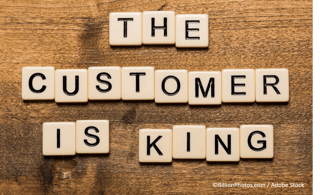Altimeter, a Prophet Company, compiled years of interviews and research with digital transformation change agents. After analyzing the data, they found that there is a six-phase process to digital transformation. The second stage is called “Present and Active”.
As we covered in our last blog post on Digital Transformation, the first stage, “Business as Usual” is characterized by a lack for any drive for digital transformation. During stage two, “Present and Active”, things begin to change. It is during stage two that several stand-out employees begin to embrace digital technologies. These  individuals are known as “change agents”. They come in all shapes and sizes and have different ways of bringing about change. Some might keep their digital use quiet — and simply download tools that help them with their day-to-day responsibilities, in isolation. They do this because it is oftentimes easier than waiting to get permission.
individuals are known as “change agents”. They come in all shapes and sizes and have different ways of bringing about change. Some might keep their digital use quiet — and simply download tools that help them with their day-to-day responsibilities, in isolation. They do this because it is oftentimes easier than waiting to get permission.
Other change agents are fighters; they push for new technologies to be tried out in the workplace. Both of these individuals push the momentum of digital transformation forward by showing success with various digital tools.
During the Present and Active stage of digital transformation, unique characters start to emerge from different portions of the organization that represent various facets, including data and analytics, customer experience, governance and leadership, people and operations, technology integration, and digital literacy. The six summaries below depict how these portions are affected in this stage of digital transformation.
Throughout this process, it’s important to keep in mind that the customer experience is the catalyst for Digital Transformation. During stage two, we see the “inward” focus of an organization and its processes begin to morph into an “outward” focus on the customer experience. At this stage, a common vision to address the customer experience has not yet been established, but we see an unearthing and evaluation of current processes.
Data and Analytics Are Utilized Differently
Customer Experience
 Competition forces many organizations in this stage to experiment with different channels. Various departments begin to rework their customer engagement because they see that their current digital framework, which does not take the customer into account, causes a disjointed customer journey. Because many of the departments are beginning to experiment with new channels and customer experience programs, and because these departments need to see a return-on-investment, more collaboration and sharing between divisions is sparked.
Competition forces many organizations in this stage to experiment with different channels. Various departments begin to rework their customer engagement because they see that their current digital framework, which does not take the customer into account, causes a disjointed customer journey. Because many of the departments are beginning to experiment with new channels and customer experience programs, and because these departments need to see a return-on-investment, more collaboration and sharing between divisions is sparked. Governance And Leadership
People And Operations
Technology Integration
Digital Literacy
The Importance of Change Agents in Digital Transformation Process
One excellent example of a change agent introducing new technology to a company is Jason Browning, the Global Head of Social and Digital Communication and Head of Global Internal Communications for @Novartis. He recently stated:
 “Sometimes the role of people like me is to offer employees technologies they don’t know they need yet. I’m gambling on what the next technology will be and consistently iterating and piloting with different communities within the company until I see something pick up. It’s a big challenge to decide, on an enterprise level, when to offer solutions at the right time.”
“Sometimes the role of people like me is to offer employees technologies they don’t know they need yet. I’m gambling on what the next technology will be and consistently iterating and piloting with different communities within the company until I see something pick up. It’s a big challenge to decide, on an enterprise level, when to offer solutions at the right time.”
Browning, and change agents like him, are the ones bringing organizations into and through the six stages of digital transformation. And although digital transformation may sound like a big undertaking, it’s important to keep in mind that the end goal in fostering this type of change in the first place is to get an organization closer to its unique customer journey.
Those that undertake digital transformation understand that getting to the heart of the customer journey IS the most important endeavor for any organization, one that will provide a multifarious return on investment for years to come. Companies that understand this also know that the time and effort spent getting to the bottom of the customer journey will never go to waste.
“They are inspired by their customers. Everything they do is by and for their customers,” said Brian Solis.

